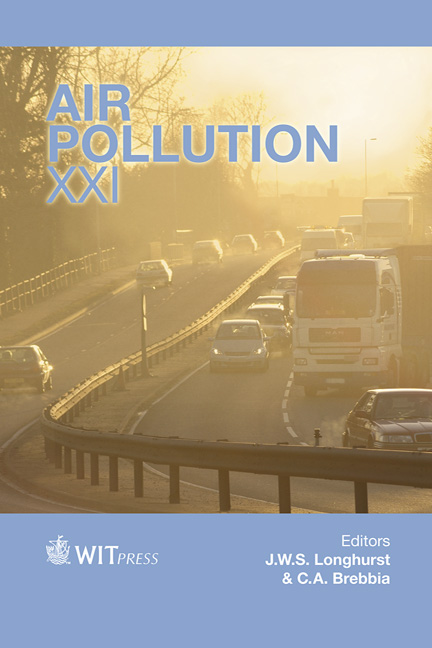Variability In Metal Deposition Among Industrial, Rural And Urban Areas In The Cantabria Region (Northern Spain)
Price
Free (open access)
Transaction
Volume
174
Pages
10
Page Range
245 - 254
Published
2013
Size
564 kb
Paper DOI
10.2495/AIR130211
Copyright
WIT Press
Author(s)
M. Puente, I. Fernández-Olmo & A. Irabien
Abstract
Cantabria is a small region located in Northern Spain that combines different land uses; thus, urban, industrial and rural areas are present in a relatively small area (5300 km2); however, the anthropogenic influence is evident by studying the deposition of metals towards these areas. Three sampling sites (industrial, urban and rural) were selected to assess the variability in metal deposition. Sampling was carried out monthly (from January 2012 to July 2012) using a bulk (funnelbottle) sampler. As, Cd, Cr, Cu, Mn, Mo, Ni, Pb, Ti, Zn and V were determined in the water-soluble and in the insoluble fractions of deposition samples. The impact of the human activities in the industrial area can be seen on several metals such as Pb, Zn, Cu and Mn. The most obvious influence was found for Mn, high fluxes were measured in the industrial site with a mean value of 2260 μg/m2·day; in contrast to urban (99.6 μg/m2·day) and rural (15.3 μg/m2·day) areas. The lowest flux values were found in the rural area for all the elements. Enrichment Factor (EF) analysis were also studied for the three sites. The high EFs values found for Pb, Mn, Cu, and Zn (>100) in the industrial site point to significant anthropogenic sources, mainly originated from industrial activities (steel and ferro-manganese alloy manufacturing plants) and road traffic. Keywords: atmospheric deposition, trace metals, deposition variability.
Keywords
atmospheric deposition, trace metals, deposition variability





